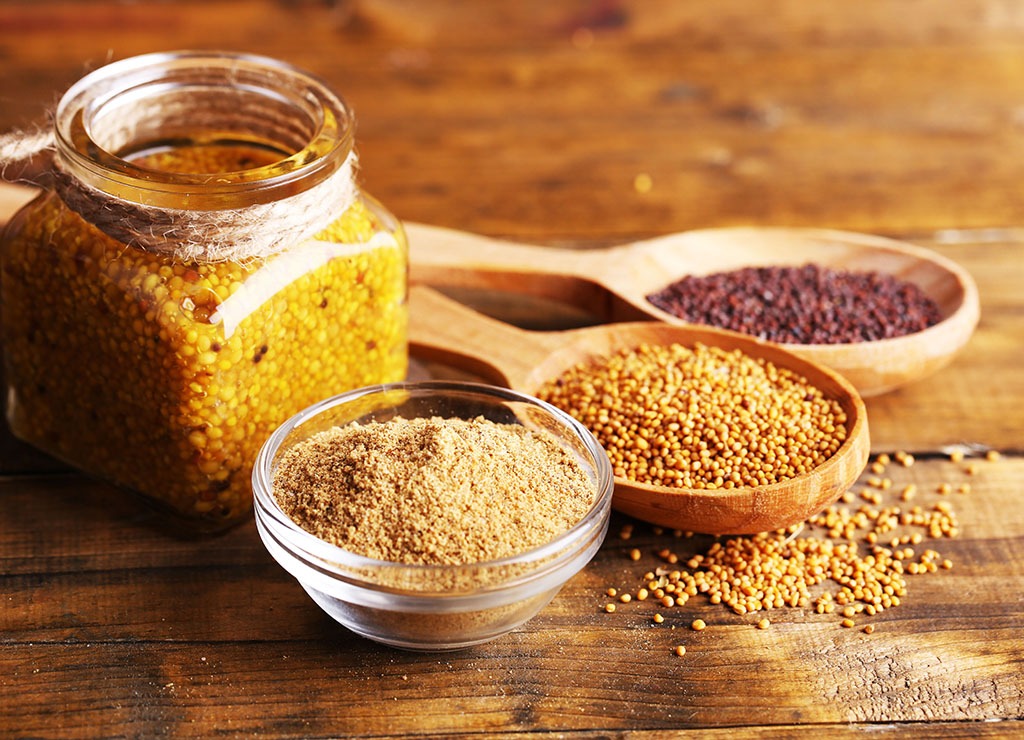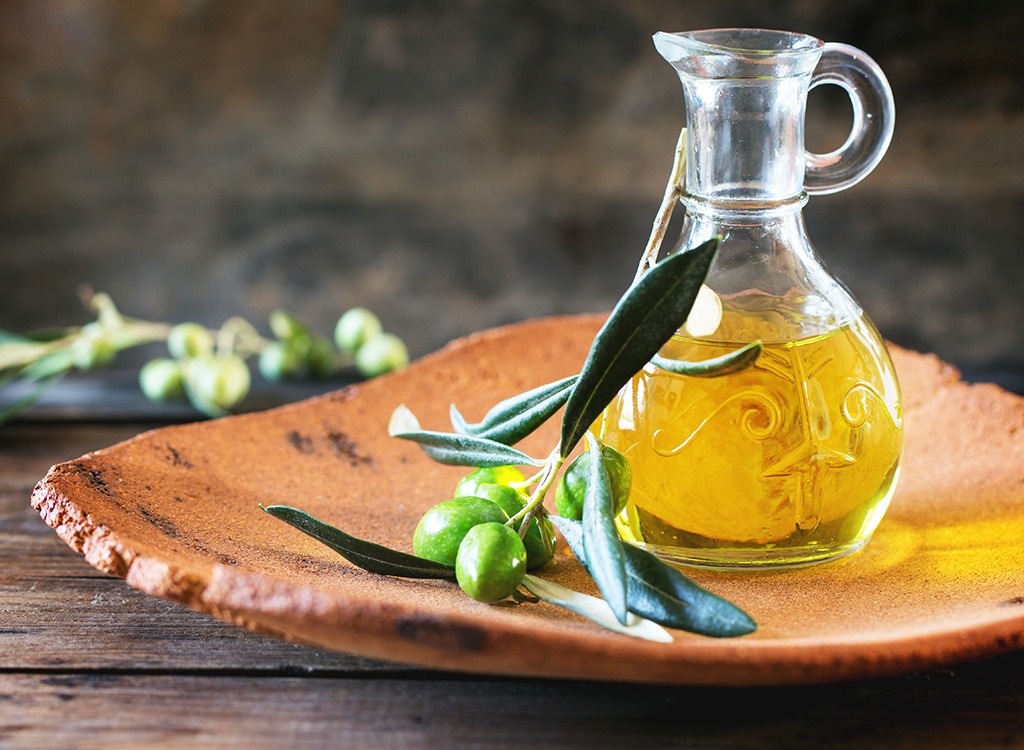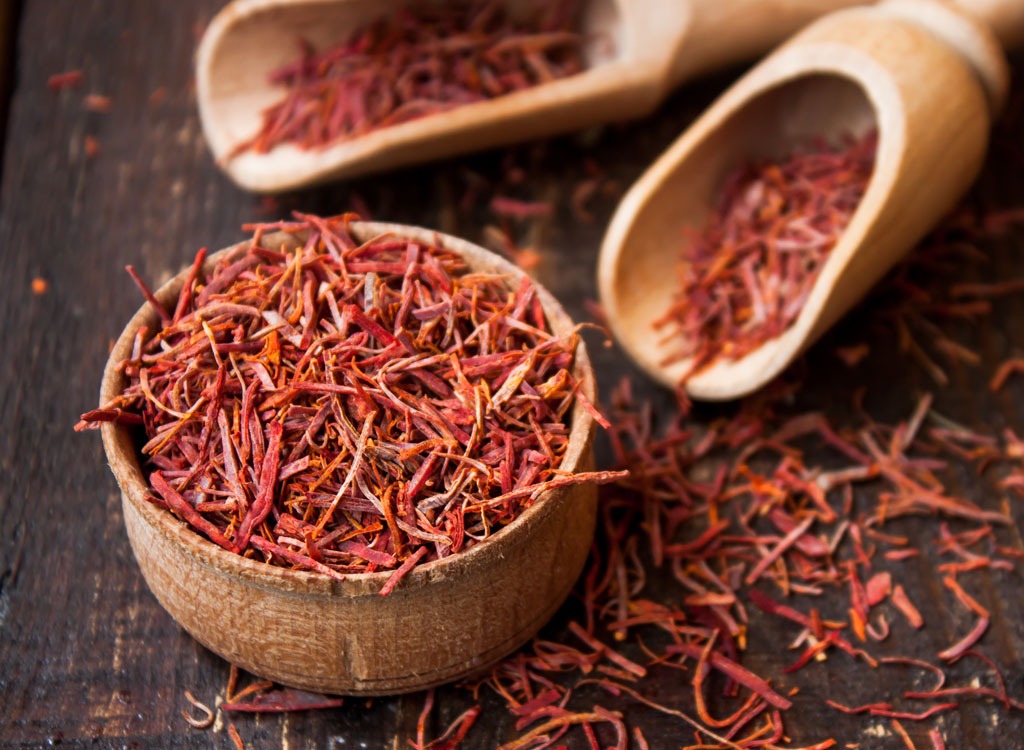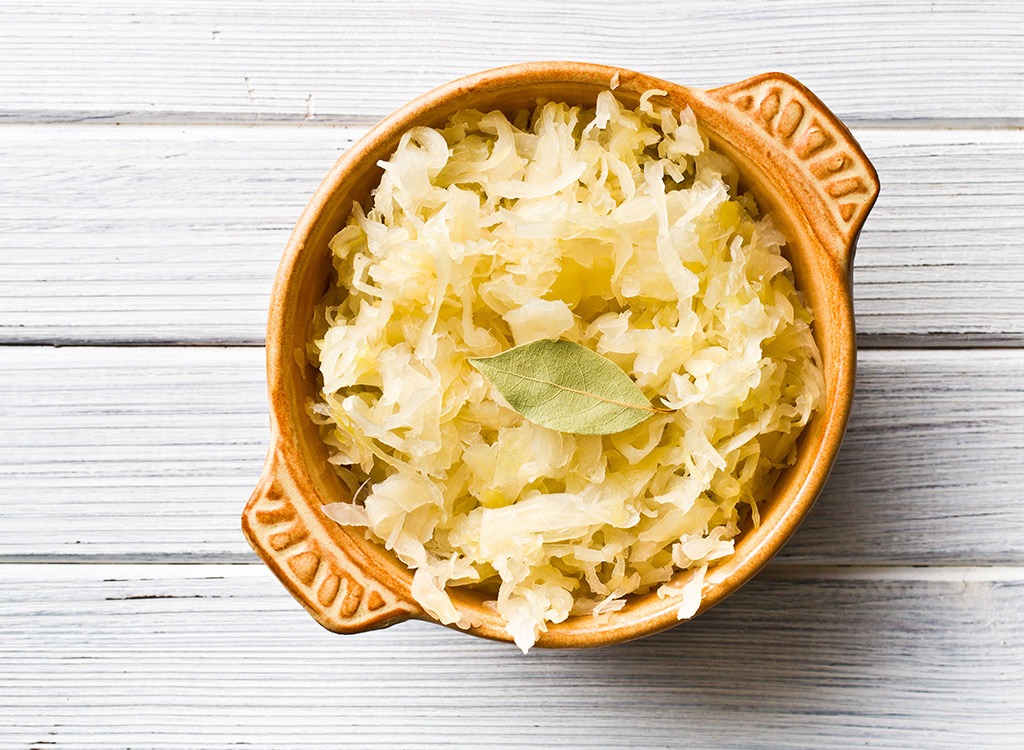The 20 Best Fat-Fighting Ingredients Worldwide

Sure, I love cooking at home, but my recipe repertoire is mostly limited to roasted veggies, pasta, and grilled chicken. And that’s exactly why I look forward to ordering a meal at the closest Thai, Middle Eastern, or Mexican restaurant, which would typically be out of my cooking comfort zone. Not to mention, they’d probably require certain ingredients I don’t keep stocked in my pantry.
And that got me thinking…
What kinds of foods am I missing out on just because I don’t use them in my everyday meals? And which can also provide powerful fat-fighting benefits. Just look at the Mediterranean diet; it’s entirely centered on which ingredients are used to make up your meals. And it’s those ingredients which make that diet one of the most effective ways to prevent obesity, cardiovascular disease, and metabolic syndrome, according to a study published in the Journal of Obesity!
Inspired, I did some digging to discover which health-promoting, slimming ingredients are used in non-American cuisines (i.e. the ones that aren’t centered on fast food, processed snacks, and soda). Take a page out of each of these cuisines’ books to discover the best fat-fighting ingredients used all over the globe! And for more ideas of what to add to your grocery list this summer, scope out these 35 Foods to Get You Bikini Ready.
Italian: Garlic

An ingredient that manages to find its way into almost every Italian dish is garlic. This little allium isn’t just good for packing flavor into a marinara sauce or adding an extra zing to toasted crostini, it also possesses powerful health benefits such as helping to boost your immune system, warding off heart disease, lowering blood pressure, and fending off weight-inducing inflammation. To reap the benefits, make sure you crush, chop, and then let your garlic bulbs sit for 10 minutes before adding them to a heat source. This process allows for the production of allicin—the health promoting compound. Otherwise, you’ll just add garlic to the list of 18 Foods You’re Eating Wrong.
Moroccan: Mint

Although famously known for couscous, Moroccan cuisine’s lesser-known star ingredient is mint: an herb which is traditionally used in Moroccan teas to extend a sign of hospitality to visitors or at the end of a meal. It’s been used in Eastern medicine for centuries, and now modern research has confirmed many of this aromatic plant’s purported health benefits, including with weight loss; Mint has been found to stimulate the digestive enzymes that reside in your gut, which can help you absorb more fat-fighting nutrients from food. These enzymes also help your body digest fat and convert it into useable energy—and not bat wings.
Thai: Coconut Milk

You may already know the benefits of coconut oil, which is why you shouldn’t be too surprised to hear that coconut milk can also help you fry flab. The dairy-free liquid is commonly used to thicken up Thai curries without thickening up your waistline. Coconut milk contains lauric acid, one of the healthiest forms of saturated fat you can consume. Lauric acid has been found to help your body maintain a balance of hormones as well as kill the bacteria, viruses, and fungi that may be destroying your gut health and causing you to crave sweets. Even better? Research has shown your body converts this type of fat into energy more easily than other types of fat.
French: Dijon Mustard

Right next to baguettes, croissants, and escargot, Dijon mustard is a big deal in France. It got its name after being invented in the French city, Dijon, by adding the juice of unripe grapes instead of vinegar (which is what the traditional recipe called for). Now the condiment is usually made with white wine. Regardless of the acid source, each jar holds powerful spare-tire-bursting properties due to the mustard seeds. Why? The capsaicin and allyl isothiocyanates—phytochemicals that give the mustard its characteristic flavor—found in the seeds have been found to speed up metabolism and torch fat, according to a study by researchers from England’s Oxford Polytechnic Institute.
Mexican: Chocolate

Mexicans figured out the easiest way to eat more of the antioxidant-rich dark cacao was to use it in their national dish: mole poblano. A complex sauce comprising of over 20 ingredients, including a variety of chiles and spiced chocolate, mole poblano is a delicious dish that proves chocolate shouldn’t just be for dessert. (Although Mexican hot chocolate may disagree.) And for good reason. Dark chocolate can help you flatten your belly because its slow-digesting, fats keep you from falling prey to hunger pangs, and its probiotics and antioxidants will help stop inflammation that causes weight gain.
Greek: Extra Virgin Olive Oil

Greek ties to the olive tree run deep—like 60,000 years old deep! Greeks pour extra virgin olive oil over salads, drizzle it over cheese, use it to flavor stews, and generally use it in just about any dish they make. And for good reason. Regularly consuming the oil has been shown to boost levels of adiponectin, a hormone that breaks down fat. Additionally, researchers recently discovered the source of EVOO’s inflammation-fighting properties: oleocanthal. This compound—found only in unrefined, phenolic-rich, extra virgin olive oils—works similarly to ibuprofen in that it prevents the production of pro-inflammatory COX-1 and COX-2 enzymes. It’s no wonder it’s a staple of the heart-protecting Mediterranean diet.
Chinese: Bok Choi

Whether it’s steamed whole or added to stir-fry dishes, this delicate cabbage is a powerful force in Chinese cooking. This cruciferous veggie is a primo source of iron, a mineral whose deficiency is linked to fatigue—which can disrupt hormone signaling and cause you feel constantly hungry. It also serves up a solid dose of choline, a nutrient which attacks the gene mechanism that triggers your body to store belly fat around your liver.
Indian: Curry Powder

One of the most-recognized dishes of Indian cuisine is curry. And although curry powder sounds like it may only belong in its namesake dish, it’s often used in many other Indian dishes. One of the most notable spices you’ll find in this blend is the one that lends its eye-catching color: turmeric. This spice is not only delicious, but it also helps quell chronic inflammation—which is thought to cause ailments from weight gain to heart disease—can reduce factors which lead to high cholesterol levels, and may even help fend off cancer. Find out more in our exclusive report, 14 Reasons Turmeric Deserves a Place In Your Diet.
Spanish: Saffron

One of the most highly-recognized Spanish dishes is the rice dish, paella, which gains its famous red hue from saffron. This delicate spice is actually the individual stigma from a flower, which is then cut and cured. The whole process is so labor-intensive that saffron is the most expensive spice in the world. But it’s well worth it when you find out its slimming benefits, one of which comes from the compound that provides the deep reddish-orange hue: crocin. This compound is a carotenoid, a class of antioxidants which provide pigment to plants as well as play a role in fighting cancer, stabilizing blood sugar, and lowering insulin resistance in humans.
German: Sauerkraut

Don’t let its association with American hot dogs skew your opinion of sauerkraut. This fermented food—when prepared traditionally—can help heal your gut and expedite weight loss. Before the invention of a freezer, Germans preserved foods, like sauerkraut, through fermentation. By adding Lactobacillus bacteria to cabbage, Germans not only elongated the shelf life of this food but also were able to reap the belly-slimming properties of the naturally-occurring probiotics. Lactobacillus bacteria boosts the healthy flora in the intestinal tract, bolsters your immune system, and reduces levels of bad cholesterol.
Japanese: Miso Paste

Like sauerkraut, miso is also a fermented food. This traditional Japanese paste is made by fermenting soybeans with salt and koji—a probiotic fungus called Aspergillus oryzae. Because miso is made from soybeans, it’s a great vegetarian source of protein, one of the only non-meat sources to provide all 9 essential amino acids. As an added benefit, miso also stimulates the digestive system, strengthens the immune system, and reduces the risk of multiple cancers.
Jamaican: Allspice

Whether it’s because of the alliteration or because it packs a flavor punch, Jamaican Jerk spices are well-known. One of the main components of the spice mixtures is allspice (also known as Jamaica pepper), which is an antioxidant-rich dried berry that tastes of cloves, nutmeg, cinnamon and black pepper all in one. Allspice has been found to have anti-tumor and anti-inflammatory abilities.
Cuban: Oranges

Cubans love pork. Almost as much as they like using orange juice to season their pork—like they do in the traditional marinade, “mojo criollo.” We’re huge fans of that as oranges are full of vitamin C, an antioxidant which helps prevent the formation of cell-damaging, inflammation-causing free radicals. And an added bonus: Oranges are a great source of selenium, a trace element whose antioxidant power maintains proper thyroid function, fights fatigue, and kick starts your metabolism.
West African: Peanuts

It’s used in one of the most American sandwiches—PB&J—but peanuts are also widely cultivated throughout Africa. One of the traditional dishes in West Africa is a groundnut stew, made with the infamous groundnut, peanuts. These nuts are packed with fiber, heart-healthy monounsaturated fats, and plenty of fat-burning folate. They’re also a great source of protein, a slow-digesting macronutrient which is stellar for weight loss as it helps decrease appetite, squashes cravings, and boosts your metabolism by directly nourishing your calorie-burning muscles.
Vietnamese: Fish Sauce

This notably pungent sauce is used in dishes like pho—a broth-based soup—as well as in dipping sauces for spring rolls. Made with anchovies, fish sauce is full of omega-3s, a class of fatty acids which helps strengthen your heart, sharpens your mind, and most importantly, flattens your belly! According to a review published in the journal Nutrients, increasing omega-3 intake may help reduce obesity by suppressing appetite, improving circulation, shifting metabolism towards the accumulation of lean tissue, enhancing fat oxidation, and reducing calories stored as fat.
Middle Eastern: Chickpeas

Whether it’s Israeli or Egyptian, the versatile chickpea plays a role in many Middle Eastern dishes, from hummus to falafel. Chickpeas (also sold as garbanzo beans) are one of most inexpensive high fiber foods which also happen to serve up a healthy dose of muscle-building protein and folate, a B vitamin that wards off osteoporosis and helps combat heart disease. Did we mention they’re also a source of resistant starch? This class of carbs passes through your gut undigested, which leads to prolonged feelings of fullness. What’s better is that Instead of feeding you, these resistant starches fuel the healthy gut bacteria in our small intestine, which ferment the fuel into butyrate, a fatty acid that encourages the body to burn fat as fuel instead of glucose.
Korean: Gochujang

The Korean version of hot sauce, Gochujang livens up any dish it tops, which is why you’ll often find it spicing up vegan foods in stir fries. The condiment is made with glutinous rice powder, powdered fermented soybeans, salt, and red chili powder—the ingredient which lends its belly-fat burning properties. A study published in the American Journal of Clinical Nutrition found that daily consumption of one of the compounds found in chili powder—capsaicin—speeds up abdominal fat loss by boosting the body’s ability to convert food into energy.
Lebanese: Bulgur

Bulgur is perhaps best known in the Lebanese dish, tabbouleh: a salad of bulgur, parsley, mint, onions, and tomatoes. This nutty whole grain is packed with 8 grams of digestion-slowing fiber per cup, making it a great waist-slimming alternative to pasta. Use it like rice in a pilaf, or toss it in a salad with fresh herbs.
Indonesian: Galangal

It looks like ginger, and is from the same rhizome family as ginger, but galangal is a distinctly different ingredient native to Indonesia. It has a slightly pine-like aroma and is commonly used in a traditional soup known as “soto” as well as a rice dish, “nasi goreng.” Like ginger, galangal is a powerful anti-inflammatory, and preliminary animal studies have found it may help to treat arthritis as well as relieve inflammation-caused discomfort through its antihistamine properties. These same properties may be helpful in reducing diet-induced chronic inflammation.
Argentinian: Parsley

If you were wondering how to lose 10 pounds, head on over to an Argentinian steak house and order the chimichurri. This green sauce is used to top off grilled meat and made of garlic, oil, oregano, white vinegar, and most importantly, parsley. Just a quarter of a cup serving of this herb provides over 200 percent of your daily requirement for vitamin K, a vitamin important for bone support. That’s great news for your health, but if you were curious about weight loss, look no further than a study in the journal Flavour: Researchers found that participants ate significantly less of a dish that smelled strongly of spice than a mildly-scented version of the same food. The takeaway? Adding herbs, like parsley, to dishes creates the sensory illusion that you’re indulging in something rich and full of calories—which can quiet your appetite quicker—without adding any fat or calories to your plate. For more genius ways to feel satisfied while slimming down, don’t miss these 26 Ways to Feel Full While Eating Less!








